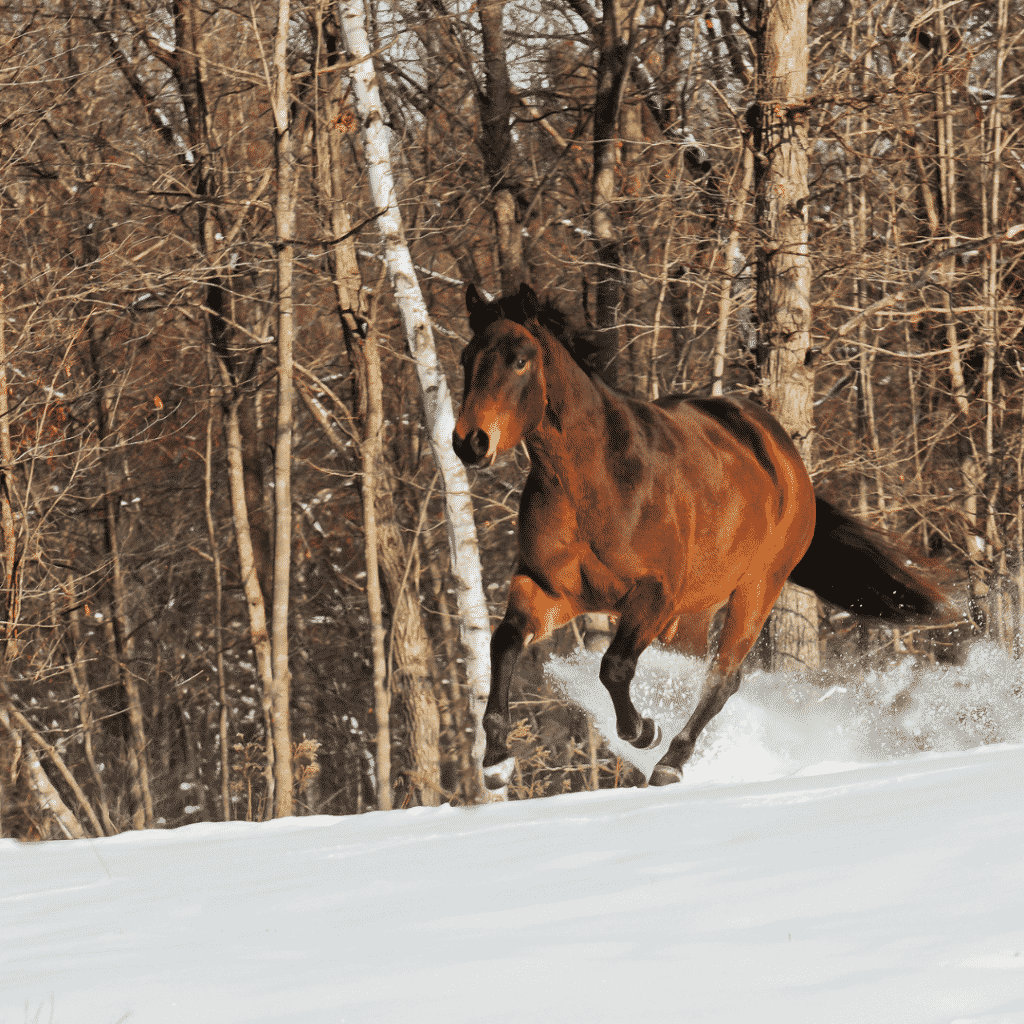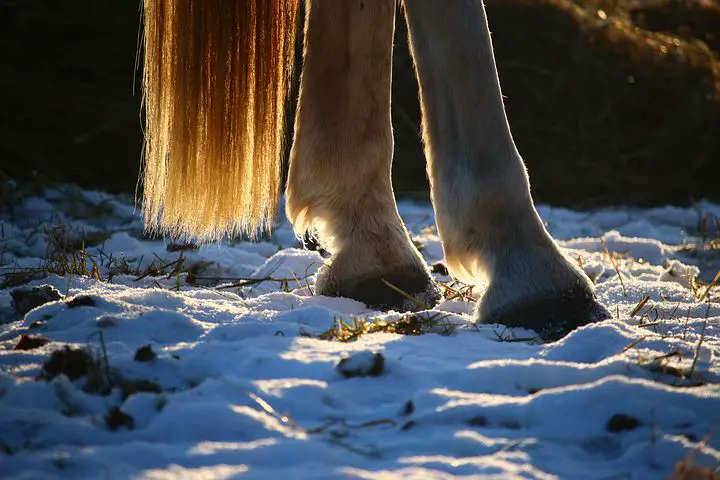Knowing how to choose a horse blanket is not an easy task. You have to keep multiple factors in mind before deciding. What is your climate? What are your horse’s needs? Is their coat clipped or unclipped? Which of the different types of blankets on the market is best?
It can be challenging and overwhelming.
Stay calm because I’ll cover all the details in this post. After reading this post, you’ll know all about how to choose a horse blanket that’s right for your climate.
How Do Horses Cope in the Cold?
When you’re a horse owner, being aware of your climate is critical. But, that said, horses have a natural ability to withstand some cold weather. For example, if the weather is 40°F (5°C) and your horse has shelter then you don’t really need a blanket for them.
You might need a horse blanket if it’s below 40°F
I know that for me, as a human, 40°F is pretty cold. But for some horses, it’s not really that bad. Horses with clipped coats tend to get a bit colder (less hair I guess!) but unclipped horses can be okay as low as 30°F.

During and after a ride, they’ll be a lot more cold resistant too, as the exertion will warm them up.
But bear in mind that after riding, your horse will be sweating. If you let them get cold afterward, this increases their risk of getting sick. Remember to use your scraper (grooming tool), and then blanket them up.
And do be aware there are other things you need to do to look after your horse in winter. Nutrition is really important, because food fuels your horse’s ability to generate body heat. Remember that it’s also essential to provide excellent & hearty nutrition for your horse during these colder months. This will help them stay warm!
Stable, turnout or both?
The 2 main types of blankets are stable blankets & turnout blankets.
Stable blankets are good for your horse if he stays inside during the winters and is not exposed directly to the cold weather. They are not waterproof and if they’re exposed to the rain, they will get wet.
On the other hand, turnout blankets are waterproof. These blankets are for horses who are directly exposed to the cold and stay outside in their pastures. They are heavy, thick and can withstand very cold weather. If you’re interested in getting a turnout blanket for your horse, I’ve got an introduction to turnout blankets you can read here.
You should decide according to the needs of your horse which type of blanket is a good fit. If your horse spends the winters in a shelter than a stable blanket is good. But, if your horse lives outside in winters then you should choose a turnout blanket. You can also use both blankets as per your requirements.
For both types of blanket, getting the sizing right will be critical. Here’s a guide on how to measure your horse for a blanket.
Unless you’re in the desert, it gets wet outside

You can use turnout blanket as a stable blanket but it is difficult to use stable blanket as a turnout blanket. Unless you’re in the desert, your stable blanket will always get wet outside in the colder weather.
You can use both types of blankets but you should prefer using turnout while your horse is out because it is specifically designed to withstand harsh weather and it is waterproof. When in doubt, opt for the turnout blanket.
BUT BE CAREFUL – check for overheating/sweating of your horse!
How to Choose a Horse Blanket: How cold are we talking?
There are different types of blankets available in the market. However, as I have discussed, horses have an innate ability to withstand harsh weather.
If you are feeding your horse properly, providing shelter and taking care of its nutrition, then you don’t need to worry, even if the weather is as cold as 40°F.
But as it gets colder, (i.e. below 40°F), you should start thinking about buying a blanket for your horse. Between 40°F and 20°F, a light to medium blanket should be alright. Colder than that and you might start looking for a heavy blanket, particularly if your horse is clipped.

Fortunately most blankets will provide temperature indications: you can find those rated down to below zero degrees (Fahrenheit). This can be a huge help for how to choose a horse blanket.
But do be mindful that temperature is only useful up to a point. Other factors like humidity, wind chill and even your horse’s breed, size and level of fitness can affect how well they deal with the cold.
Getting the right blanket is also partially about fit: it won’t do the job properly if it’s too large or too small. If you want to learn how to measure a horse for blanket the right way, I have a great guide you can use here!
Don’t forget to optimize use & maintain quality
You should not compromise on the quality of any blanket you buy. It’s all about the health of your horse, after all! Always remember to choose materials that are good for how rambunctious your horse is.
Another important tip from me: don’t forget to clean waterproof blankets properly. A horse blanket can be a very effective item during the colder weather. But to keep it effective, you need to clean it properly. Follow the cleaning instructions provided by the manufacturer of your horse blanket.
If you have any questions about how to choose a horse blanket, please comment below!
Happy riding 🙂
Liked this post? Why not pin it!



You continually use terms like “harsh”, “cold”, “extreme” etc. Could you perhaps be more precise. A temperature range would be much more helpful….10 to 20 degrees…..30 to 40 degrees…..above 35 I would recommend. The vague terms can mean many different things to many different people living in different climates….Georgia vs New York vs Canada and even regions within those boundaries.
Hi Bob!
Thanks for your comment. I’ve added a couple of more specific temperature references. You’re right, what people perceive as ‘cold’ across the world can vary greatly! And of course other factors like wind chill, dampness, and even your horse’s ability to thermo-regulate will play a part too.
Do let me know if you have any other questions, and thank you again!
Katie